10 automotive terms that muddy fact and fiction
This story originally ran on this site in November of 2019. It’s reproduced here, with minimal changes, as a riff on the same theme as this 2023 story examining the origins of the GMC name. That piece proved popular, telling us that you have an appetite for accuracy. Cheers to that! — Ed.
Considering how frequently I cringed during my decades as a technical editor at car magazines, it’s a wonder I didn’t develop a nervous tic. There’s a lot of misinformation and nonsense out there among non-experts who parrot certain phrases or terms, without really understanding what they mean. Here are my favorite cringe-worthy gaffes.
All-aluminum engines
I don’t believe any engine manufacturer has made a crankshaft out of aluminum. Same goes for piston rings, exhaust valves, and the fasteners tying everything together. I suspect this expression originated in England as lazy shorthand to describe an engine with an aluminum block and head(s).
Steel brakes
Brake rotors are made of cast iron or, in some cases, carbon-ceramic material which begins as a mix of carbon fibers bound with special resin. Cooking that blend for an extended period in a vacuum yields a ceramic material that’s excellent for stopping race cars and supercars. For more affordable cars, grey iron provides the best heat transfer while ductile iron’s higher strength is preferred for vented rotors. Motorcycles are a special case where stainless steel discs sacrifice some performance while avoiding unsightly rust caused by splashing through puddles.
Anti-sway or stabilizer bar
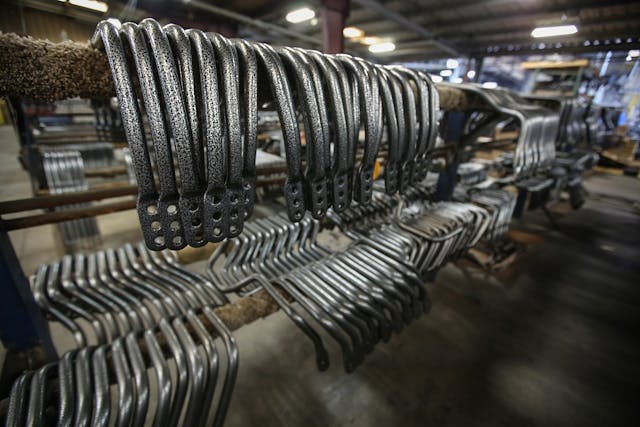
This transverse steel rod linked to your suspension system twists to resist body roll in turns. That’s why it’s most accurately called an anti-roll bar. Worried that you’d fret over your car tipping over, manufacturers coined meaningless alternative terms.
“Perfect” or “ideal” weight distribution
BMW and others would have you believe that 50:50 front-rear is the correct answer. Generally speaking, it’s not. Front-wheel-drive cars perform better with more than 50 percent of their weight carried by the front wheels and vice-versa for rear-wheel-drive rides. Cars with four-wheel drive have a more agile steering response with a rear bias. The ultimate balance depends on several factors: center of gravity height, polar moment of inertia, tire size stagger, and spring and damper rates, to cite a few. Supercars like Chevy’s mid-engine C8 Corvette, for example, typically carry roughly 65 percent of their weight on their rear tires to optimize acceleration, cornering, and braking performance.
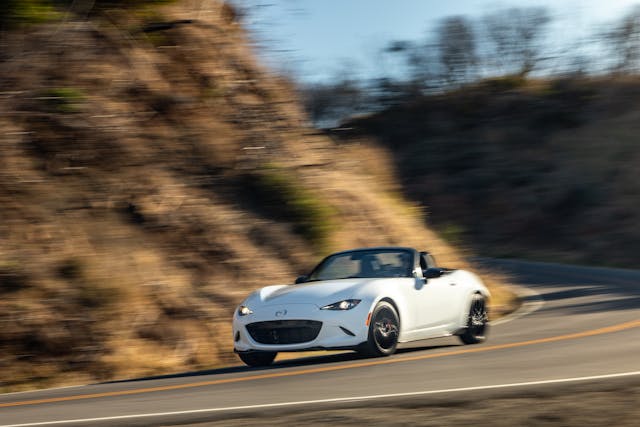
Strength vs. Stiffness
Car parts that lack sufficient strength will fracture—as in actually crack or break in two. Ideally, that occurs only during severe collisions. Insufficient stiffness means that a suspension member, the body structure, or some other crucial part deflects too much under normal loading, impairing ride quality and handling precision. Every steering system component must be stiff to transport the subtle but useful feedback forces from the tire contact patches to the driver’s hands.
AWD vs. 4WD

This confusing construct was created to distinguish vehicles that employ four wheels for propulsion all the time from those with the means to manually engage a second drive axle when the road is slippery or non-existent. AWD can signify full-time four-wheel drive (such as most Audis and Subarus). Many modern AWD systems have intelligent controls that engage the second axle automatically and temporarily when slip is detected at the primary drive axle. Most AWD vehicles have a third center differential to accommodate the rotational speed differences that exist between the front and rear axles, though the extra diff isn’t needed with automatically engaging AWD.
4WD indicates part-time maximum traction (Jeep Wrangler), often used in vehicles where the driver can select 2WD or 4WD modes with a switch or a button. 4WD is a common feature of modern pickup trucks and heavy-duty SUVs.
Exemplary Aerodynamics
Carmakers love to tout low drag coefficient (Cd) figures to celebrate how readily their bullets pierce the wind. Lower is always better and any Cd below 0.30 is cause for popping a champagne cork. But before you begin swilling the bubbly, understand the rest of the equation. What really matters is drag area, the product of a car’s drag coefficient multiplied by its frontal area (CdA). In other words, a large slippery auto may perform no better than a tidier one with a higher drag coefficient.

Torque vs. Horsepower
This is an epic battle intensified by today’s onslaught of battery-electric cars. First, let’s distinguish between static and dynamic torques. Static torque is what you apply to your engine’s head bolts during a rebuild and is indicated by the dimensional units foot-pounds (or ft-lbs). To cinch the bolts at 100 ft-lbs, you apply 50 pounds of force to a two-foot-long wrench.
Dynamic torque is the rotating force that exits an engine’s crankshaft. The preferred units are pound-feet, lb-ft, or newton-meters if you’ve made the metric leap. When you see units misquoted as lb/ft by some witless writer, please pen a scathing letter to the editor.
Eighteenth-century inventor James Watt observed that a horse powering a sawmill needed one full minute to hoist a 33,000-pound load one foot upward. He defined that work as one horsepower. In his honor, the metric expression for work is kilowatt.
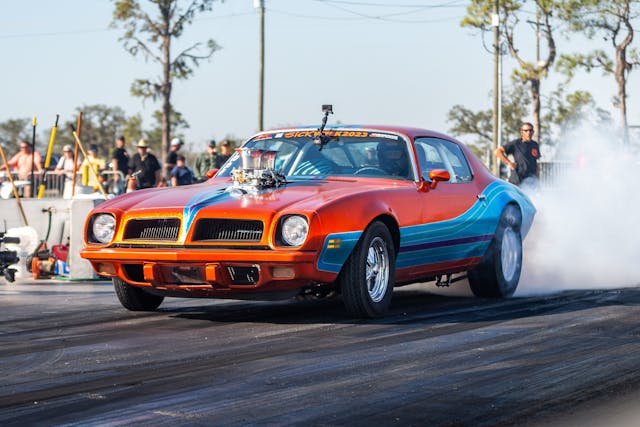
In the greater scheme of things, the amount of torque produced is proportional to the quantity of air flowing through the engine (or the size of an electric motor). The goal is maximum torque at the lowest rpm with the ability to sustain that output for as long as possible. The torque plot for a perfect engine or motor (none exist) would consist of a straight line from idle to the redline—the so-called “flat torque curve.”
Torque versus horsepower discussions inevitably devolve into a debate of which is better. The answer depends on your driving style. If you have an automatic transmission and you hesitate to downshift passing a car in traffic, you want right-now torque—the more the better. Any Tesla Model S or Chevy Bolt owner will spout chapter and verse about the instant torque they enjoy in daily driving. But if you’re a more aggressive driver who dwells at the upper half of the tachometer’s sweep, horsepower is your best friend. Your engine’s bottom range is merely for backing out of the garage. Your throttle is the trigger that unleashes more rpm and maximum power. Bottom line: torque is for painless tooling around, power is what gets you home in time for dinner.
Weight Transfer
Your car’s weight is a vector—a force proportional to its mass directed toward the center of the earth. Think W = mass x g, with g as the acceleration due to gravity. Your car’s mass permanently resides at its center of gravity (C of g), varying only in three specific instances. Its map coordinates change as you drive to work. And your car’s weight diminishes as you consume fuel or drop the kids off at school. During the body’s roll and pitch motion, the C of g also moves slightly from its static location.

What’s popularly (yet erroneously) known as weight transfer is more accurately described as load transfer. Drive around a corner and some of the load borne by the inside tires is “transferred” to the outboard tires. Step on the brake and the rear tires are unloaded while the front rubber is squished more firmly into the pavement. The opposite happens during acceleration. The amount of load transfer depends on the severity of the maneuver and the height of the car’s center of gravity which, as noted above, moves little during the tires’ tap dance on the pavement.
Where the rubber meets the road, dynamic forces point in three different directions. The share of the car’s weight a tire carries, diminished or augmented by load transfer, presses downward on the vertical axis. Increasing the vertical load applied to any tire increases traction—its ability to produce fore and aft and lateral forces. In the horizontal plane, the fore and aft axis represents the acceleration or braking force produced by the tire. Cornering forces reside in the horizontal plane on the lateral axis.

Venial sins of nomenclature
The term “crossover” was coined to describe a blend of car and truck components and traits. Like “wagon” and “SUV,” the crossover label has by now run out of gas. The same is true of import versus domestic ID tags. Given the car business’s world scope, distinguishing between a Ford Fiesta manufactured in Mexico and a Honda Accord made in Ohio is fruitless.
***
Check out the Hagerty Media homepage so you don’t miss a single story, or better yet, bookmark it. To get our best stories delivered right to your inbox, subscribe to our newsletters.
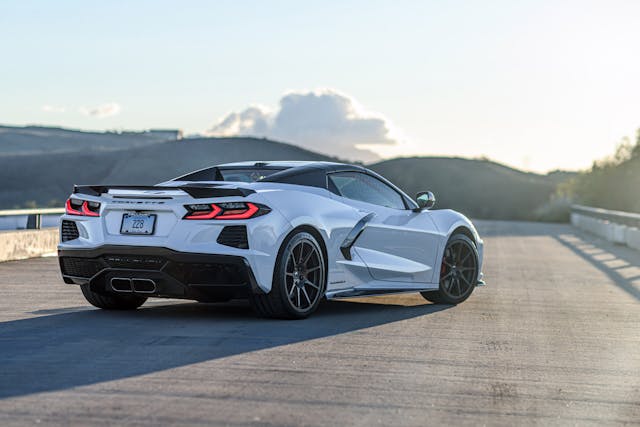

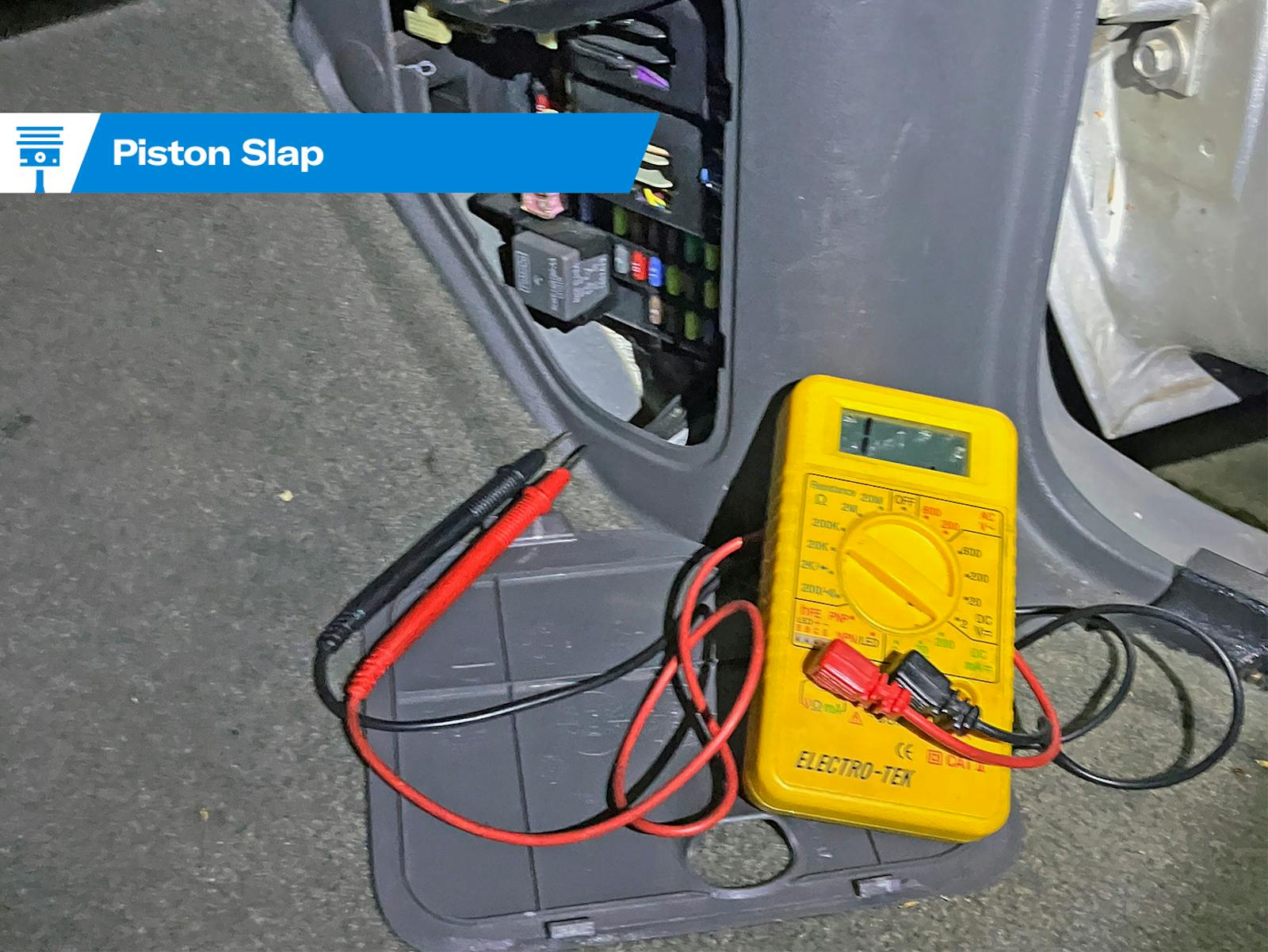
I always used to apostrophize acronyms. But stopped when I saw few others doing it on the web.
Really good list. Disagree on Anti-Sway Bar. Swaying motion happens in two directions back and forth on an axis (center axis being the centerline of the car) or SWINGING. Roll happens in one direction as the entire car pitches downward into a turn either left or right. Further, a “Roll Bar” is a protective device inside the driving compartment behind the driver to protect the driving compartment from collapsing in case of a ROLLover. That said, “Anti-Roll Bar” makes no sense, especially considering that a roll bar or cage with 3 or more points actually adds chassis stiffness, this reducing… body roll.
The comments are better than the article !
The big one that was missed was motor versus engine. You know when you say she’s got a big block motor instead of engine.
I hate to say it but I’ve dyno tested engines for 30 years and use the term foot pounds for torque instead of pound feet. I know I’m incorrect but I never liked the term. Luckily we have been using Newton Meters for quite some time so I guess I don’t look as ignorant. I will say that it’s more common to use Ft/Lbs even in the testing world.
I do not think that where the vehicle is assembled is fruitless. For starters, it could be assembled in a union or a scab factory. All Big Three and European plants are union, virtually none of the others are.
Only Don Sherman and the best automotive writers know the difference between a motor (electric) and an engine (gas). I’ve always felt quick should be used for a timed distance and fast for top speed.
I always laugh at the frame of restorations of unibody cars. There is no frame to remove the body from.
I always understood your work be force applied to a lever x the length of the lever, f x d, lb-ft
Work equals how far something is moved x force required to move it, d x f, ft-lb
Wish we could edit our comments after we post them…
frame off restorations
torque is force applied to lever x length of lever
So is it the massive torque of the Koenigsegg Gemera that makes it faster 0-60 mph than Bugattis and Ferraris? Or is it horsepower? Aren’t they equally important when talking about getting there quickly?
Interesting to note, in the section on ‘drag’, the comparison is between a large frontal area vehicle and a ‘tidier’ one. Maybe ‘tinier’?
Generally speaking, except for cars that come automatically with AWD, the usual way to differentiate between AWD and 4WD is this- a vehicle that defaults to front wheel drive and has the option to engage the rear wheels is best called AWD. 4WD is more properly describes an SUV or pickup that has the ability to go offroad, Manufacturers are sometimes guilty of optimistically misnaming their products 4WD that wouldn’t last ten minutes offroad. I have been a Jeep driver for years but even the one I am driving now, a Patriot, is not badged correctly. On the tailgate it says 4WD but it is a front wheel drive Dodge Caliber underneath.
Not exactly in the same lane, but this reminded me of the statement that always ended a conversation for me. Being a car and bike guy but also a big two stroke guy, I have lost count of the rubes who, when telling me of their two strokes, said “Yeah I had a power band put in it”!
You language cops need lighten up. A rose by any other name is still a rose, Go get some torque and burn some rubber.
Reminds me of the horsepower ratings confusion during the original muscle car days. The tri-power Pontiac GTO 389 was said to have 360 hp. One version of the 327 Corvette mill was said to have 365 hp. As time went on, folks began to say, “The Corvette L88 really generates 500 hp, not 425.” Or, the Cobra Jet 429 really generates over 400 hp, not 335.” Which numbers are correct? Did the tri-power 389 generate more than 360 hp? My numbers may be a bit off (going by memory), but the point is what numbers are accurate? Did the manufacturers fudge the numbers in the later years (perhaps for insurance purposes)? Are the early numbers valid, but the later ones aren’t? If so, when did the change occur?
What you feel is not torque at the crankshaft, but force at the rear wheels, which for a given wheel size, is proportional to torque at the rear axle, or engine torque times engine rpm divided by axle rpm. For a given speed, this is proportional to horsepower. So the tractor manufacturers are exactly right to cite horsepower, which determines the force they can exert by choosing the correct gear ratio. This is also why you should change gear when the horsepower at your current rpm is equal to the horsepower at the rpm you will be at after changing (as long as you’re not past the red line).